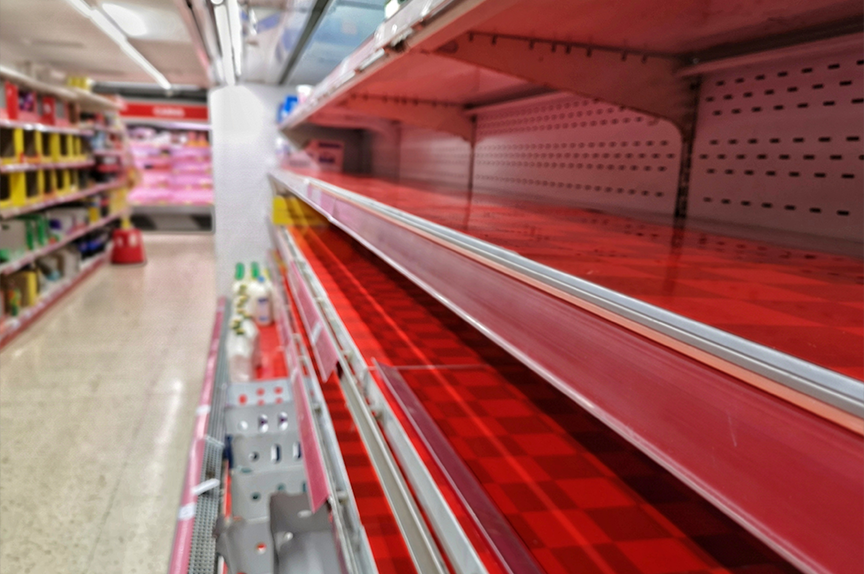
Think Tank
How to Identify and Overcome Supply Chain Risk in 2023

A transparent and efficient supply chain today doesn’t guarantee success tomorrow. Change is necessary, and that’s especially true in today’s world of economic uncertainty and global unrest.
Lacking foresight into what 2023 will bring, businesses nevertheless have the power to identify risks in the supply chain and prepare for the coming year. Following are five ways to achieve that objective.
Centralize information. Supply chain visibility is imperative to identifying and assessing supply chain risks. The first step in gaining visibility is centralizing information to ensure that all content — from product data to documentation — is stored in an easy-to-access and secure location.
With a growing number of companies maintaining a remote work policy, it’s not always easy to securely centralize information. But integrated collaborative tools allow companies to gather the data in one place and share it with a distributed team.
Integrate supplier data. Modern supply chains are more complex than ever before. This is due in large part to the inclusion of multiple tiers.
Many companies have a system for managing the first tier of their supply chain but need to dive deeper. This is a problem, as risks often increase the deeper one goes into a supply chain.
Traditionally, the collection of information required directly contacting suppliers. This is both inefficient and unreliable. Rather than continue down this path, a growing number of companies are using artificial intelligence and knowledge graph technology to:
- Match components and material information to global suppliers.
- Gain insights into deep-tier supplier chains.
- Identify and mitigate risks.
- Identify alternative suppliers and optimize their supply chain.
- Track compliance issues.
Make it a group effort. In most cases, the identification of supply chain risks isn’t something that a single individual will manage from start to finish. But for a group effort to be successful, there must be frictionless communication across departments.
Decision support across teams allows for:
- Real-time scenario analysis. Interactively evaluate current processes and alternatives while comparing multiple scenarios.
- Multi-criteria decision analysis. Identify risks and compare potential changes across criteria and perspectives.
- Instant impact assessment. Identifying a risk will typically lead to a change. Team members can assess quickly how changes to the supply chain will affect all aspects of product performance, from compliance to costs, sustainability, and more.
Forecast the future. Having adopted the above strategies, companies should ask:
- How will our supply chain change if we choose new suppliers?
- What are the risks associated with change, such as growing legal or compliance risks?
- Are any materials currently at risk of shortages? Could this change for the worse in the future?
For example, in late 2022, the threat of a rail strike in the U.S. was very real. In fact, it was within a few days of turning the world upside down. As the deadline approached, supply chain managers focused on contingency plans.
While it’s impossible to remove all the stress and anxiety associated with a rail strike or similar event, companies with contingency plans had the advantage of a clearer path forward. Those that neglected to forecast the future were left scrambling and hoping for the best.
Think outside the company. The COVID-19 pandemic served as a wake-up call. Within a matter of weeks, most of the world was on lockdown.
Weather events such as winter storms, wildfires and hurricanes are also potential supply chain disruptors. And of course, global unrest, such as that caused by Russia’s invasion of Ukraine, also can wreak havoc.
There are aspects of the supply chain that can be controlled, such as manufacturers, vendors, warehouses, transportation companies, distribution centers and retailers. It’s critical to identify and address risks associated with these stages.
There are also supply chain disrupters that businesses can’t control. They can’t alter the path of another COVID-19 surge, for instance. But they can understand the potential impact on the supply chain, and create a contingency plan for managing it.
Accurately identifying and assessing supply chain risks is critical to the short- and long-term health of the business. Additionally, knowing how to identify current risks and prepare for future ones allows companies to maintain transparent supply chains with built-in flexibility.
Sophie Kieselbach is senior implementation engineer for sustainability at Makersite.






